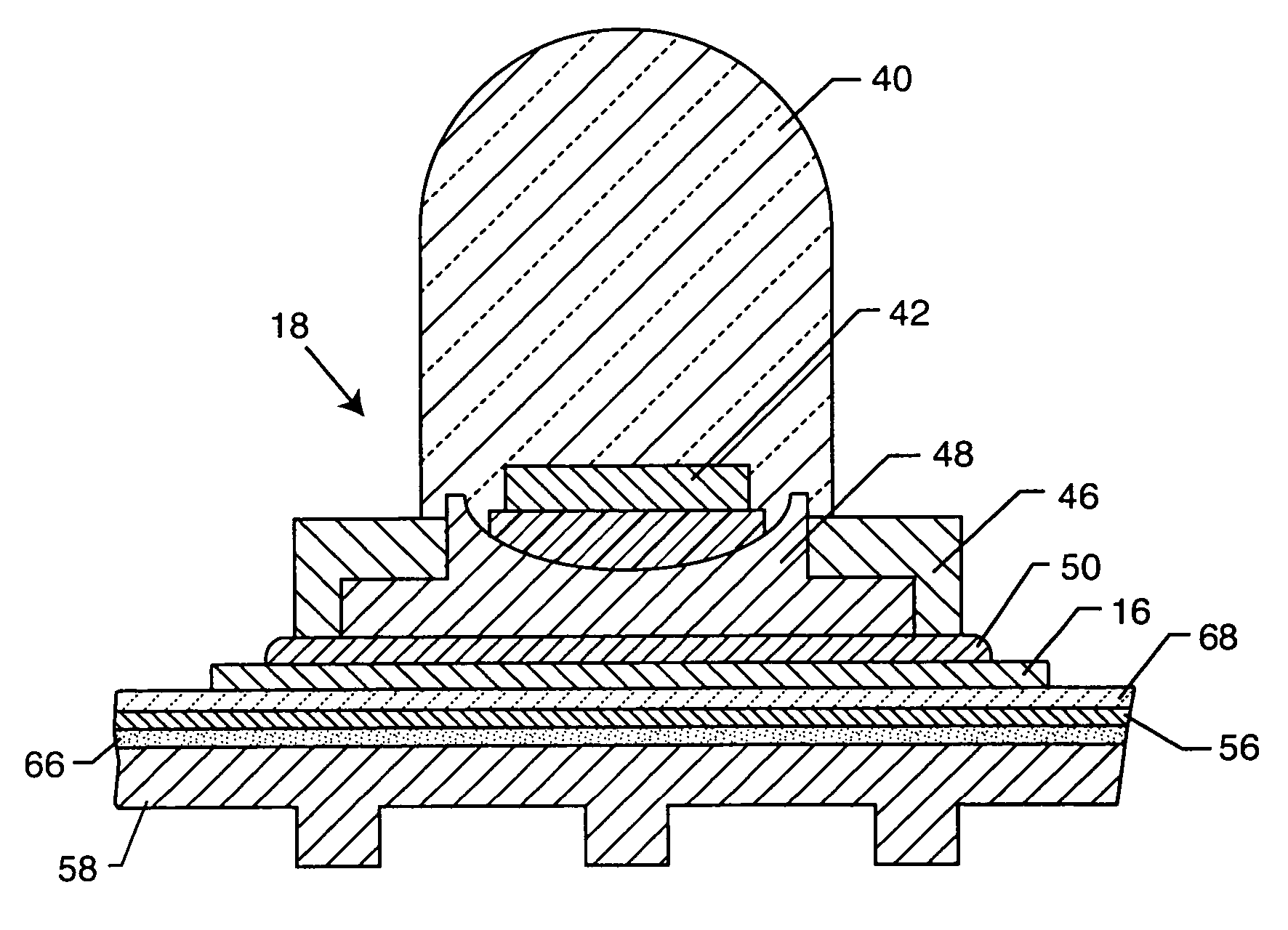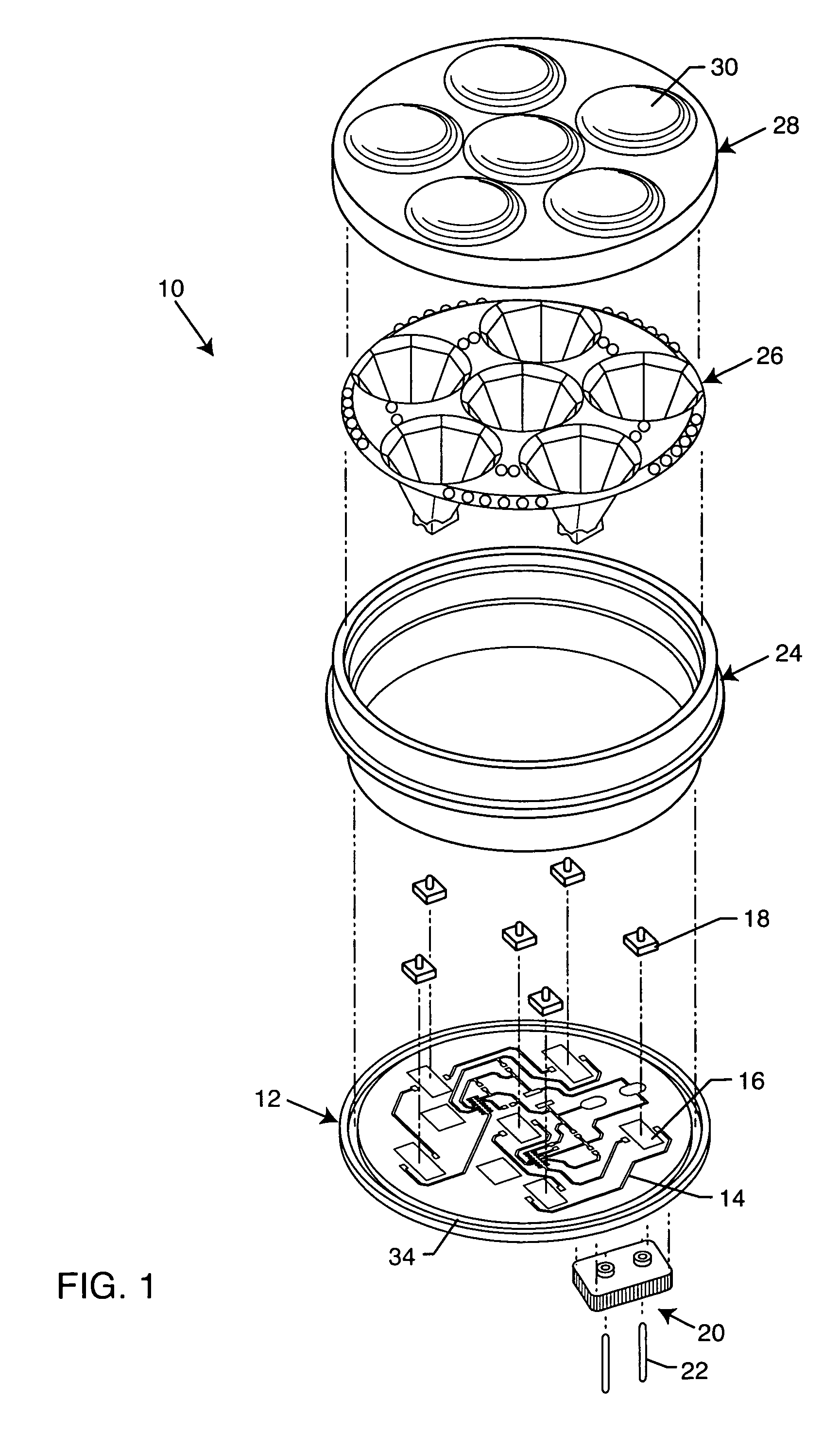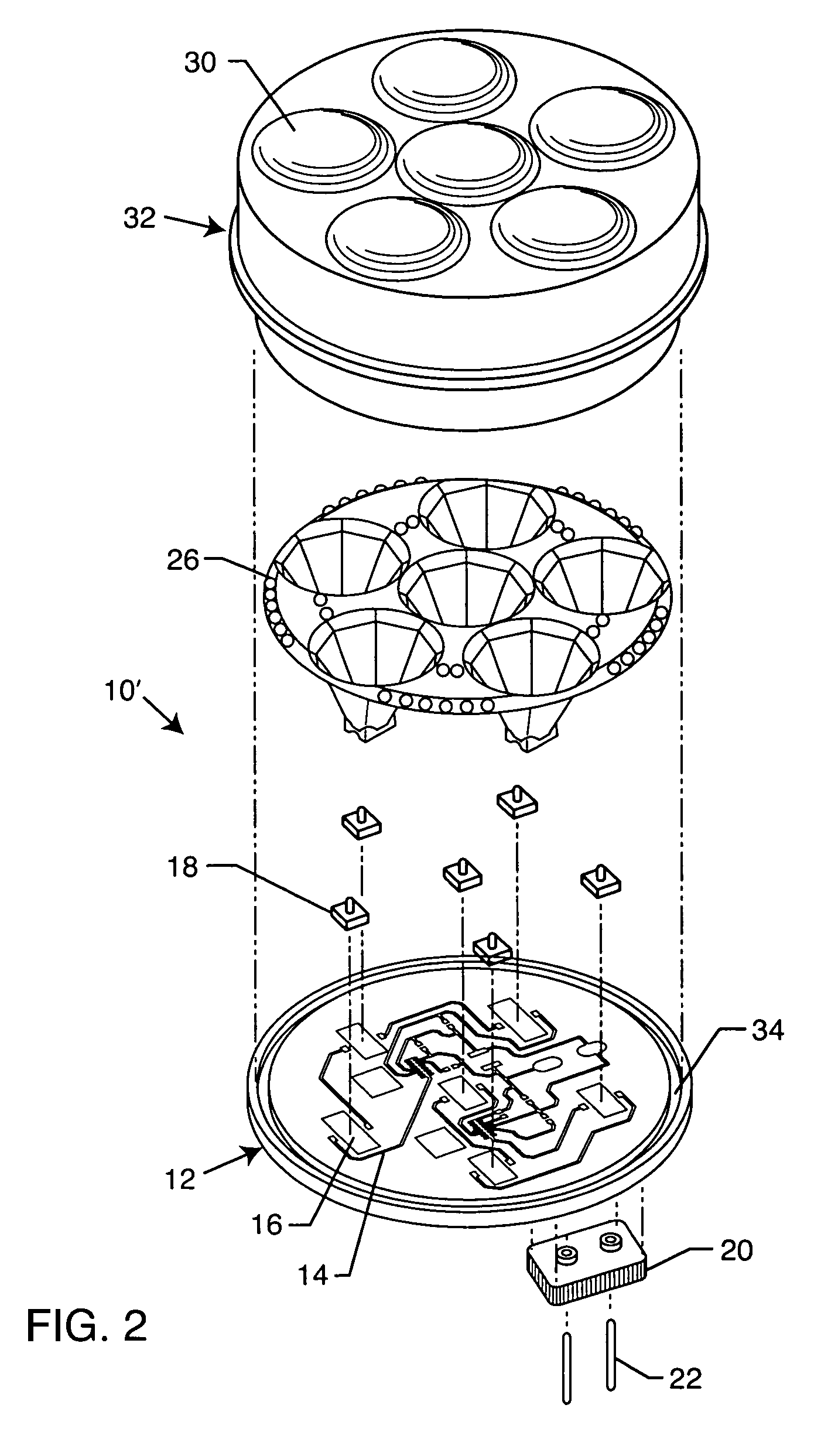Process for manufacturing an LED lamp with integrated heat sink
a technology of led lamps and heat sinks, which is applied in the direction of conductive pattern formation, semiconductor devices of light sources, lighting and heating apparatus, etc., can solve the problems of unsatisfactory resolution of high-power led technology, permanent deformation, and inability to achieve light output sensitivity, so as to maximize heat transfer from leds
- Summary
- Abstract
- Description
- Claims
- Application Information
AI Technical Summary
Benefits of technology
Problems solved by technology
Method used
Image
Examples
Embodiment Construction
[0030]As shown, in the accompanying drawings, for purposes of illustration, the present invention resides in an LED lamp assembly, and particularly in a method for manufacturing these in such a way to remove the heat generated by the LEDs in an efficient manner. When referring to the Figures, like numerals indicate like or corresponding parts throughout several views.
[0031]With reference now to FIG. 1, an LED lamp assembly, generally referred to by the reference number 10, embodying the present invention is shown. The assembly 10 includes an electrically and thermally conductive base 12. The base 12 includes a very thin electrically insulating coating, on at least a portion of the surface thereof. Typically, the base 12 is comprised of a metal material with at least a portion of a top surface thereof anodized. For example, the base 12 is typically comprised of aluminum or an aluminum alloy.
[0032]Aluminum is a superb thermal conductor, being 90% more thermally conductive than a tradi...
PUM
| Property | Measurement | Unit |
|---|---|---|
| electrically | aaaaa | aaaaa |
| thermally conductive | aaaaa | aaaaa |
| electrically insulating | aaaaa | aaaaa |
Abstract
Description
Claims
Application Information
 Login to View More
Login to View More - R&D
- Intellectual Property
- Life Sciences
- Materials
- Tech Scout
- Unparalleled Data Quality
- Higher Quality Content
- 60% Fewer Hallucinations
Browse by: Latest US Patents, China's latest patents, Technical Efficacy Thesaurus, Application Domain, Technology Topic, Popular Technical Reports.
© 2025 PatSnap. All rights reserved.Legal|Privacy policy|Modern Slavery Act Transparency Statement|Sitemap|About US| Contact US: help@patsnap.com



